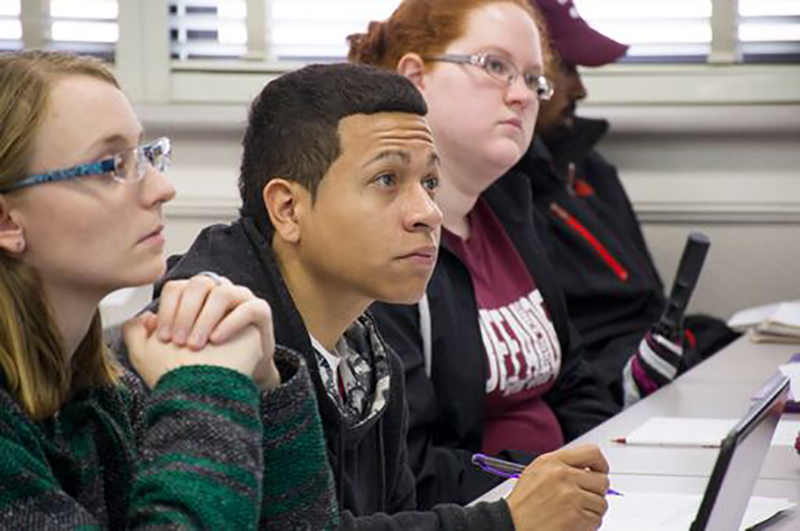
As students and families begin the annual search for universities next fall, I offer suggestions about what they might look for. Is the university accredited? What is its reputation? What programs and courses are offered? What is the cost, and how do financial and scholarships reduce indebtedness? Is the campus well-maintained and cared for? Is location one that suits the interests of the student? Are there career and job placement services available? These are all important and legitimate questions—treat each seriously.
However, a larger question may be greater than the sum. Is the university student-centered?
In a world where the essence of education is perpetually evolving, different universities play a pivotal role in fostering learning atmospheres conducive to student growth and development: student engagement. Traditional universities are sometimes faculty-centric. A student-centered university is a concept that places the needs, experiences and interests of students at the core of the educational structure, promoting an engaged learning experience. This happens in universities where the focus is on teaching. The challenge is that all universities say teaching is first. Faculty and students working together are the foundation of a rich educational experience.
A student-centered university accentuates the importance of active learning. Students are encouraged to explore, inquire and contribute to their education. This approach prioritizes the student’s voice, allowing for a more personalized and tailored educational journey. For instance, students can choose courses and modify curricula that align with their aspirations and professional goals. This flexibility empowers students, making learning more relevant and inspiring. Institutions that encourage faculty creativity in their teaching often lead to active student learning.
In such universities, the emphasis is on developing critical thinking, creativity and problem-solving skills rather than mere rote learning. Students are involved in practical, hands-on experiences and real-world problem-solving, enabling them to build knowledge and wisdom through experience and reflection. This interactive learning atmosphere enriches academic understanding and fosters soft communication, teamwork and leadership skills. When students witness firsthand faculty members grappling with how and what to teach students, student-centeredness cannot be far behind.
Another hallmark of a student-centered university is the integration of technology into the learning process. Leveraging advanced learning tools and platforms ensures a more interactive and dynamic learning environment. Technology enhances access to resources, creates diverse learning materials and fosters a learning environment accommodating various learning styles and needs. Such a technologically integrated approach facilitates a more adaptable and resilient learning ecosystem, catering to the demands of the ever-evolving matrix of students and their aspirations. WT’s strategic plan WT 125: From the Panhandle to the World emphasizes the importance of access to digital resources as a central expectation of contemporary students.
The emotional and psychological well-being of students is paramount in a student-centered university. Supportive services such as counseling, mental health resources and extracurricular activities are essential components in creating a nurturing learning environment. Such services address students’ various challenges, fostering a sense of belonging and promoting overall well-being. This approach ensures that students are academically successful and emotionally and psychologically balanced.
Overcoming resistance to change and fostering a collaborative culture among all stakeholders is crucial for successfully implementing a student-centered approach.
Assessment in student-centered universities demands innovation, focusing on developing a broad range of skills and competencies. Beyond traditional testing, assessments must encompass various methods like portfolios, presentations and projects, reflecting the student’s overall growth and learning. This comprehensive approach to assessment enables a more accurate understanding of students’ abilities and progress, ensuring the development of well-rounded individuals.
A student-centered university is a transformative concept that shapes the educational experience around each student’s unique needs, interests and aspirations, one at a time. An enriched learning environment evolves by fostering active learning, integrating technology, promoting well-being and innovating assessments. The transition to student-centered education necessitates a collaborative and open-minded approach from all stakeholders, faculty, students and staff, emphasizing continuous improvement and adaptability. Embracing this 21st-century shift in education is imperative in preparing students to navigate and contribute meaningfully to our changing world.
These issues and challenges drive effective universities to focus on students. As you ponder options, look very carefully. Test what you hear. Seek universities that don’t pay lip service to student-centeredness but rather have it as the heart of university life. This is our goal at West Texas A&M University.
Walter V. Wendler, President of West Texas A&M University. His weekly columns, with hyperlinks, are available at https://walterwendler.com/.
